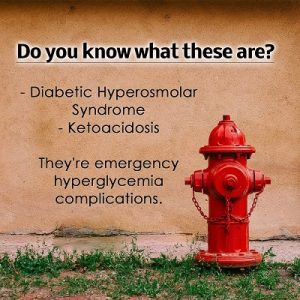 Hyperglycemia is a medical term meaning having very high levels of blood glucose. The World Health Organization defines hyperglycemia as fasting blood glucose levels that reach 7.0 mmol/L or higher, or a blood glucose reading of 11.0 mmol/L two hours after meals.
Hyperglycemia is a medical term meaning having very high levels of blood glucose. The World Health Organization defines hyperglycemia as fasting blood glucose levels that reach 7.0 mmol/L or higher, or a blood glucose reading of 11.0 mmol/L two hours after meals.
Blood glucose exists in a range, and when it goes above these levels it is defined as hyperglycemia. However, you don’t simply either have hyperglycemia or not. The difference between the effects of mild hyperglycemia and extreme hyperglycemia can be profound.
There are also huge differences in outcomes between an acute hyperglycemic episode and chronic hyperglycemia, which is the precursor to type 2 diabetes. Any hyperglycemia can be damaging, but when blood glucose levels are elevated constantly the body’s health is severely impacted, and some of the damage can be irreparable.
Hyperglycemia occurs as a result of not having enough insulin, no insulin at all or when the body is not responding to insulin efficiently. People who have this condition are at risk of suffering from major complications and should seek medical attention to determine the cause and best recovery options.
If hyperglycemia becomes chronic and left untreated the following complications may occur:
- Blindness, damage to the retina, cataracts
- Damage to nerves that lead to serious infections in the feet
- Kidney damage or failure
- Osteoporosis and other bone and joint problems
- Non-healing wounds
- Oral infections
- Cardiovascular disease
Emergency Complications of Hyperglycemia
Diabetic Hyperosmolar Syndrome
This condition mostly affects type 2 diabetics. In type 2 diabetes, insulin may be being produced, even in increased amounts, but the body has become insensitive to it due to its constant presence. This is due to excessive and repeated ingestion of simple carbohydrates, usually sugar-based foods and drinks.
In turn, the person’s blood glucose level stays high and is more than 600mg/dL. Since the hormone insulin is not working properly the body will not be able to use its free fatty acids and glucose for energy.
The high levels of blood glucose are dangerous and the body desperately seeks to lower the levels via the kidneys. The person will find they are urinating more often.
If nothing is done to remedy this situation an individual may suffer from extreme dehydration. When this state is reached patients are usually unable to rehydrate sufficiently orally, and an intravenous drip is necessary. Prompt medical attention should be given to people who have this condition as it can cause coma or even be fatal.
Ketoacidosis
This condition usually occurs among people with type 1 diabetes but those who are diagnosed as type 2 diabetics may also suffer from this condition.
Diabetic ketoacidosis or DKA is a condition which occurs when a person has very high levels of blood glucose for a long period of time along with the increased production of blood acids referred to as ketones.
This condition develops as a result of the body’s inability to produce insulin thus basic metabolic requirements can hardly be met. Regardless of food intake, the body is essentially starved of glucose, as there is no insulin to process it and make it available.
Our brain’s primary energy source is glucose and in its absence our systems fail. The symptoms of ketoacidosis are rapid deep breathing, drowsiness, blurred vision, frequent urination, loss of appetite, excessive thirst, stomach pain, vomiting and confusion.






